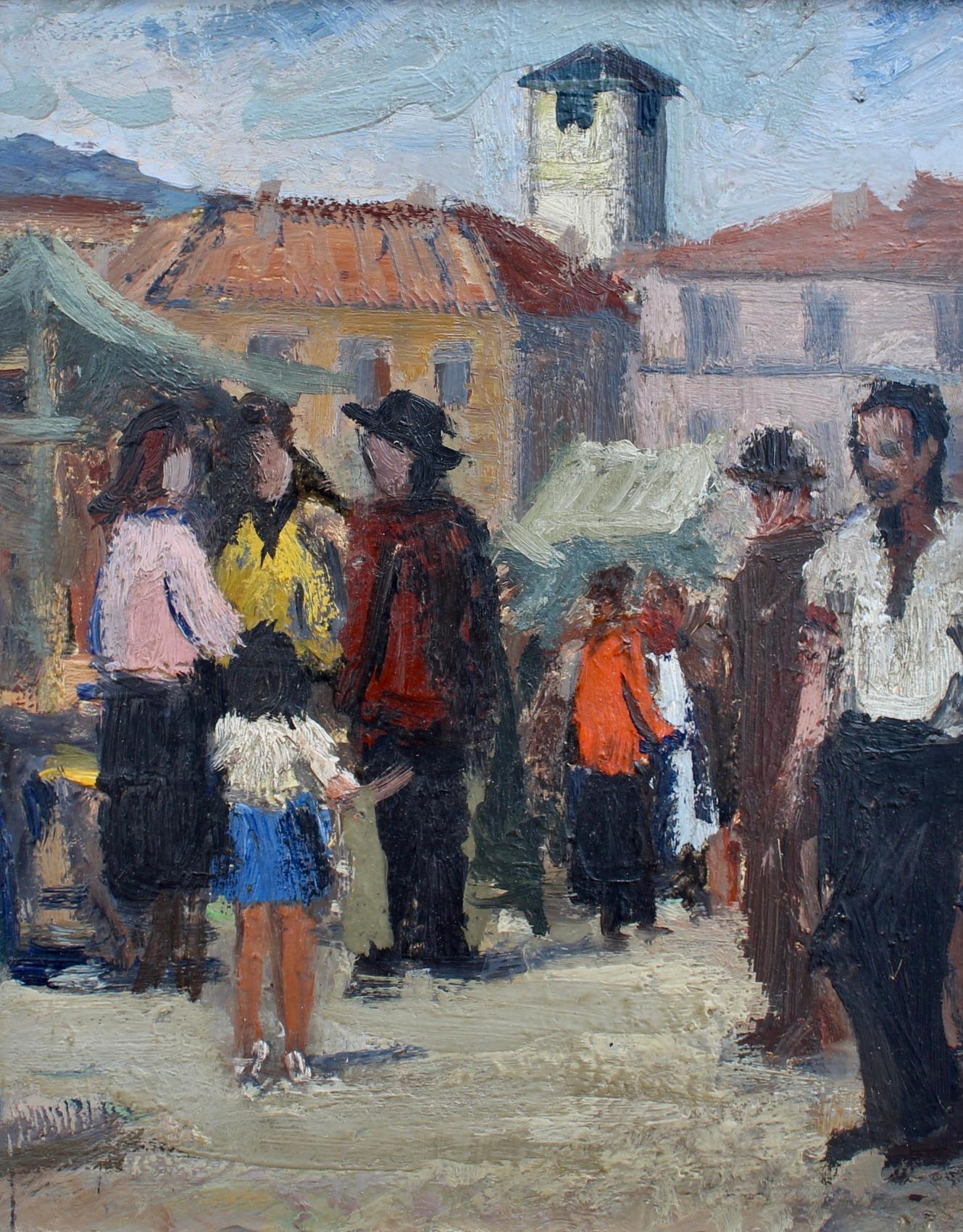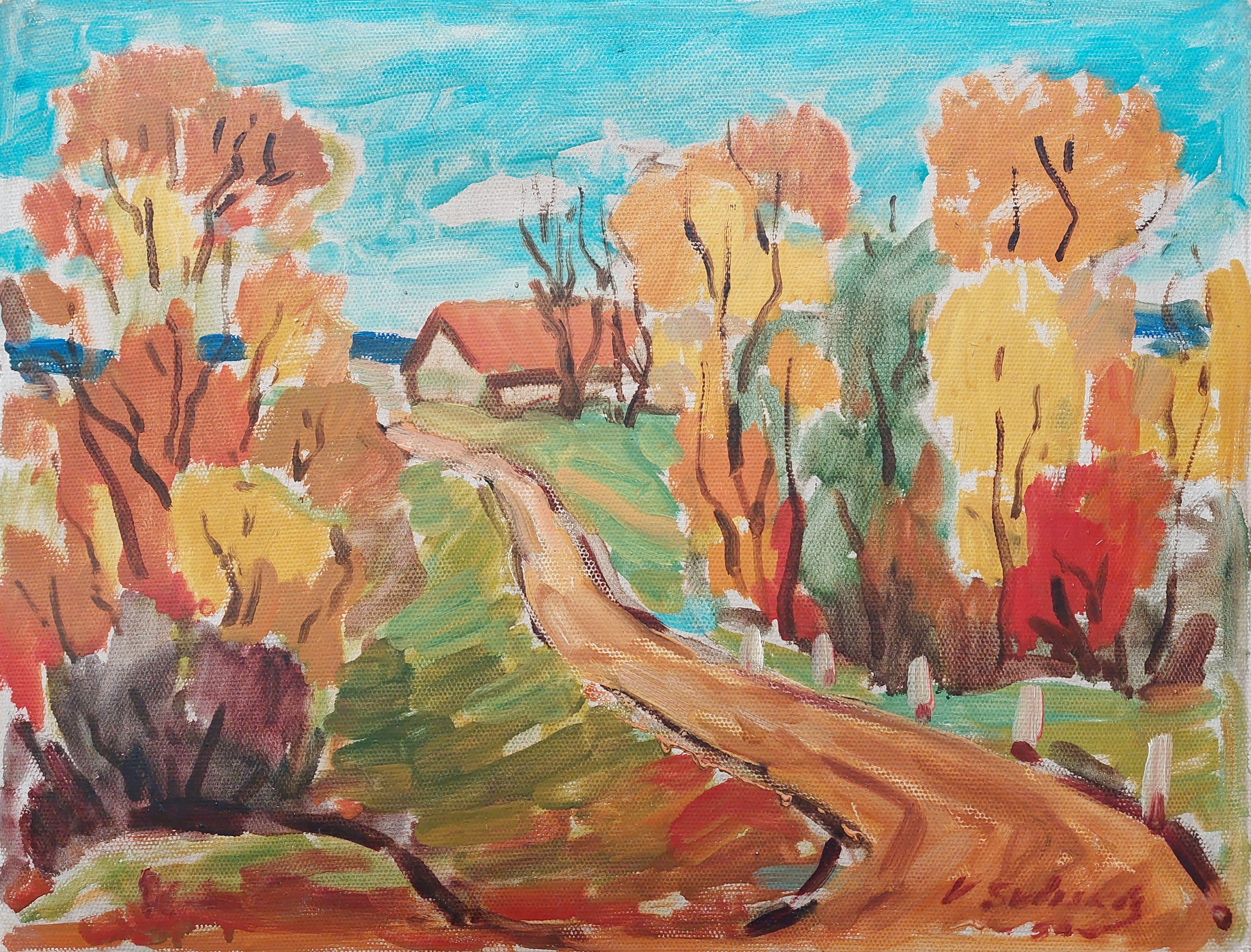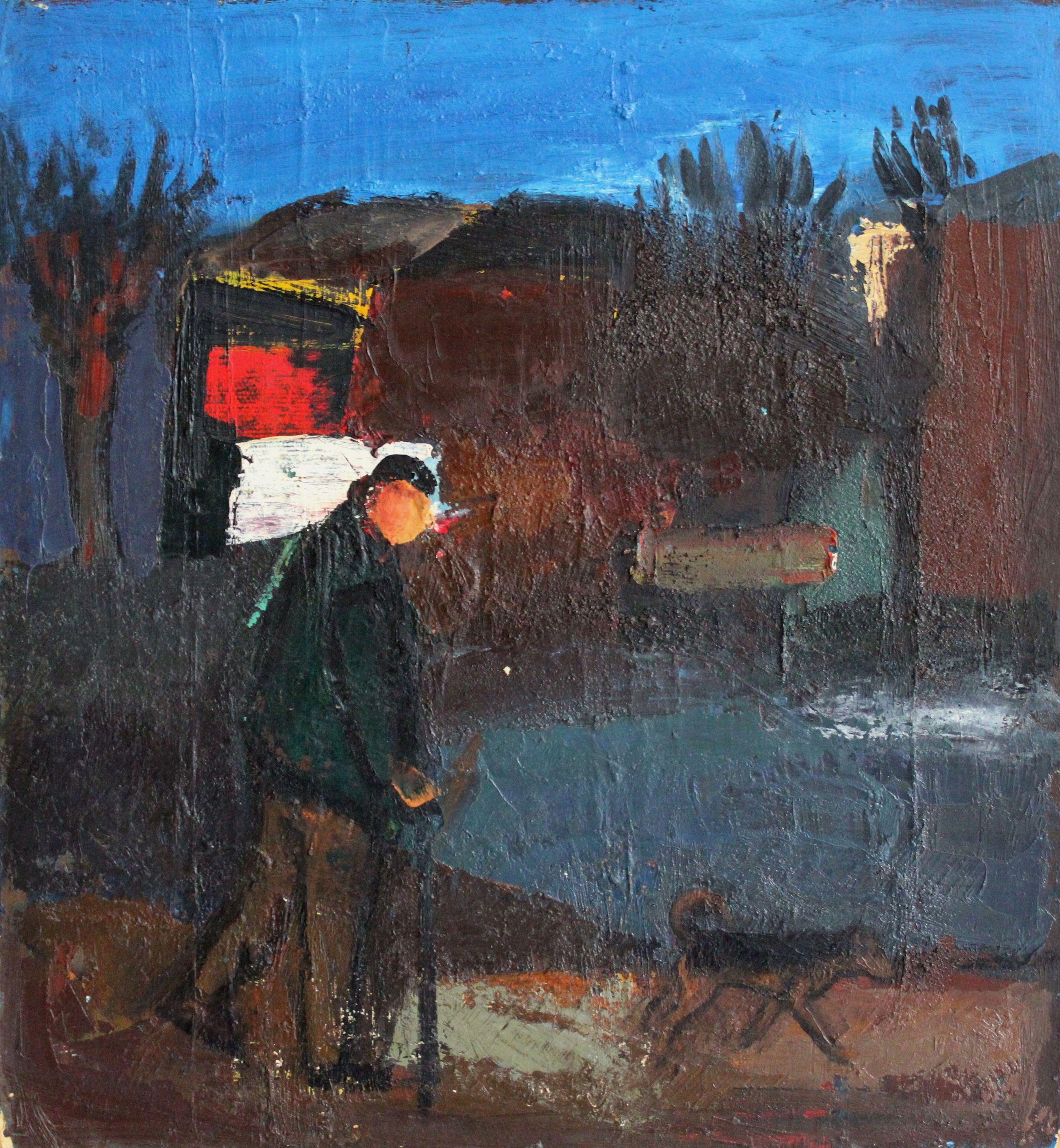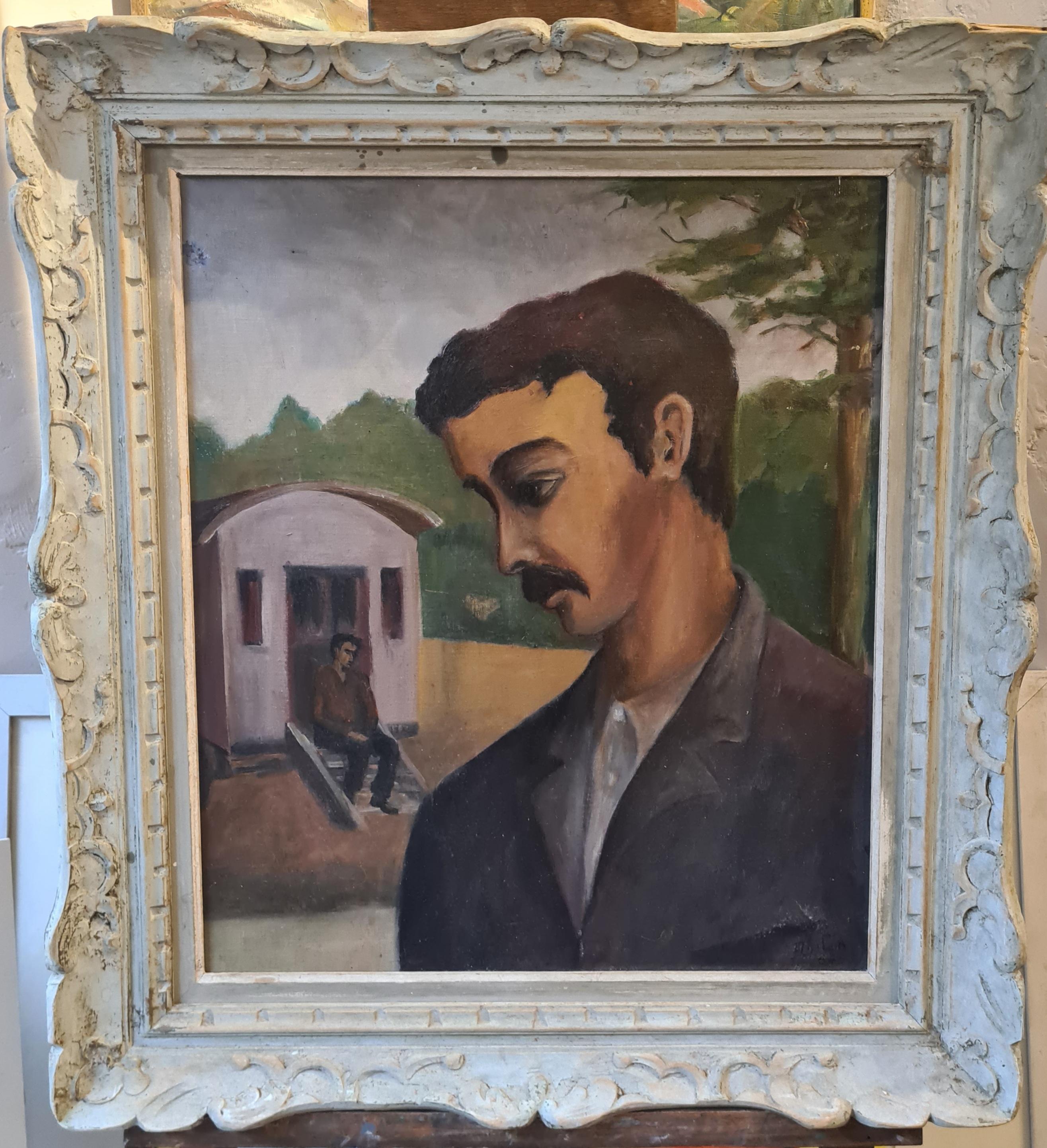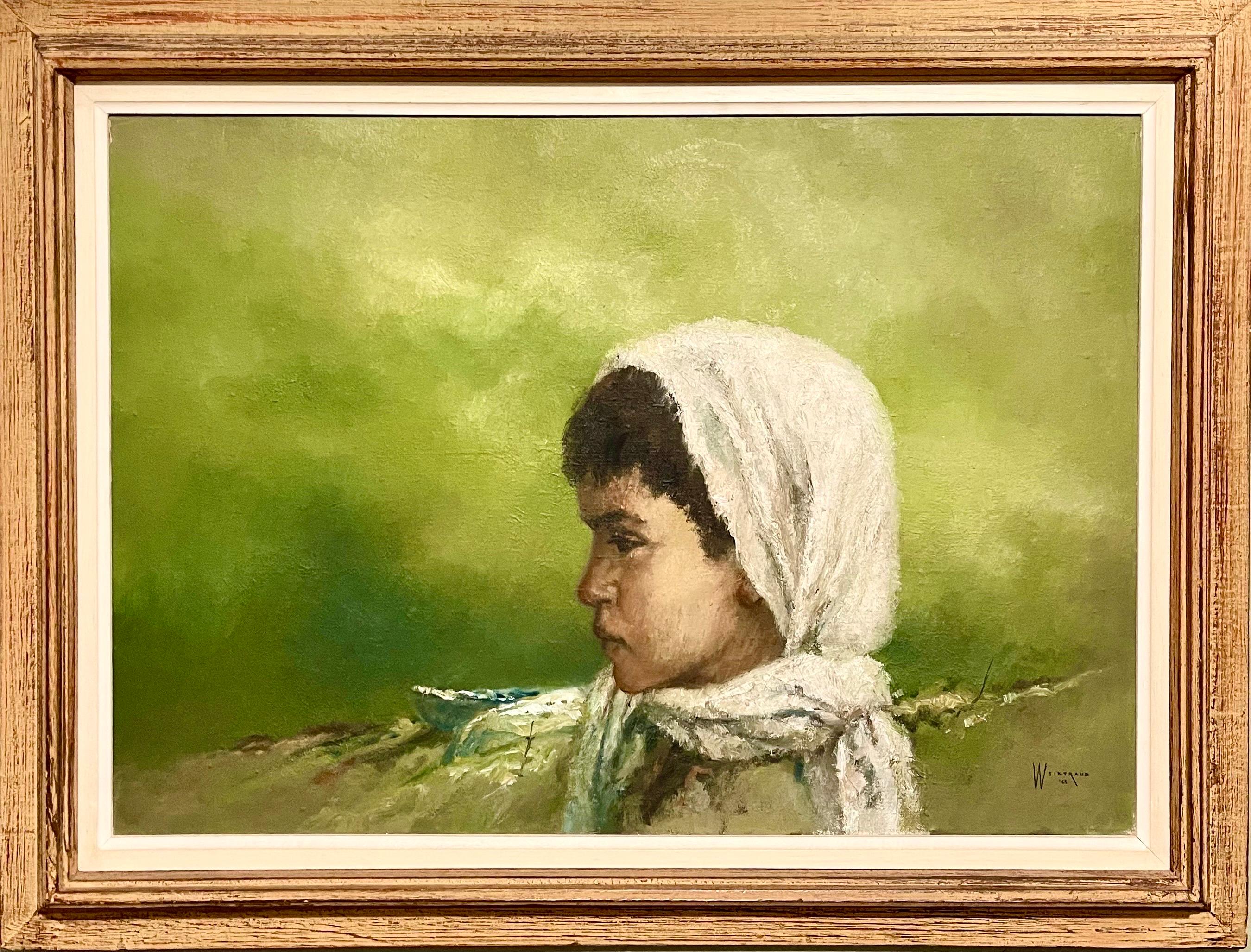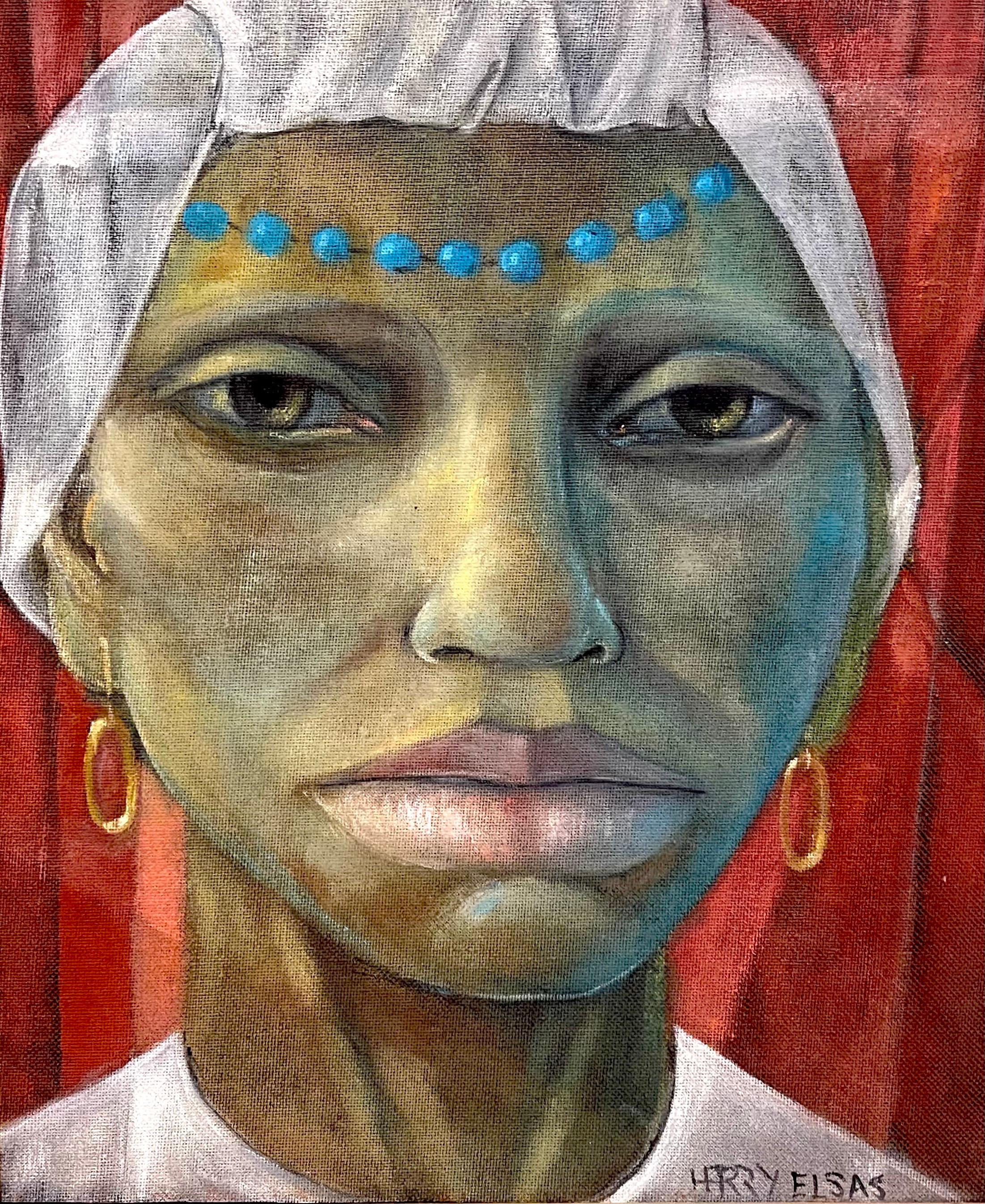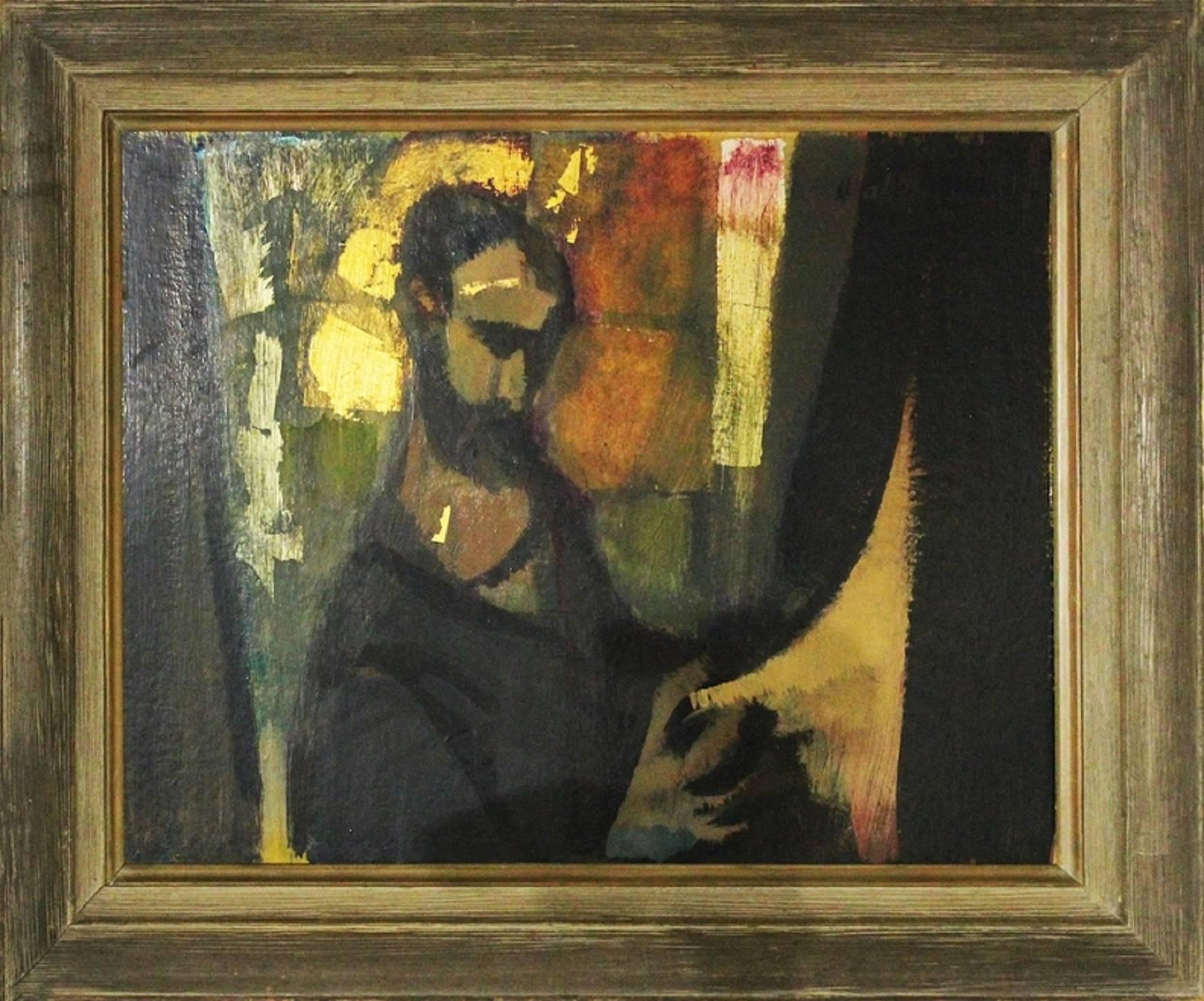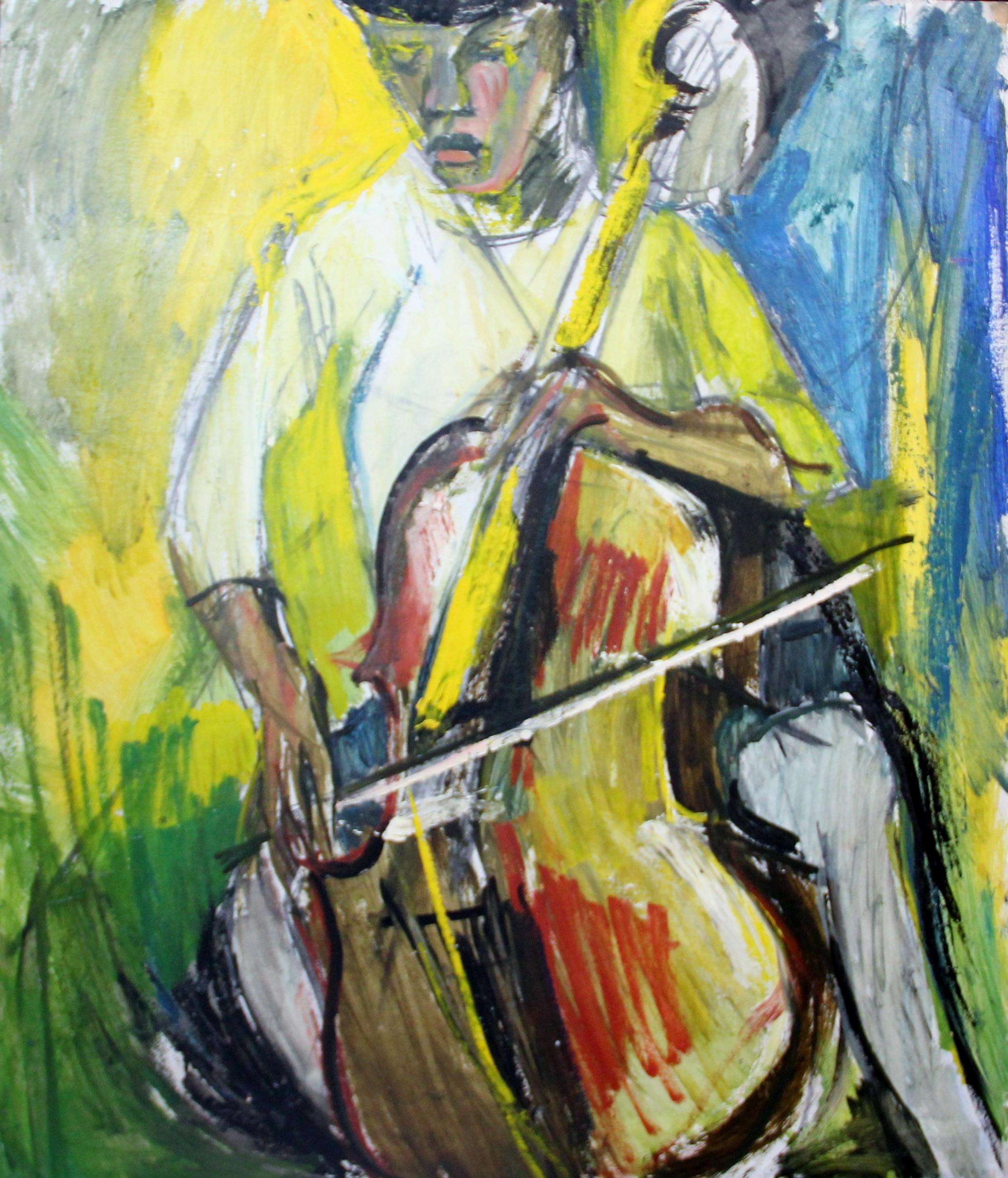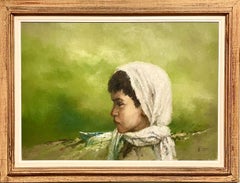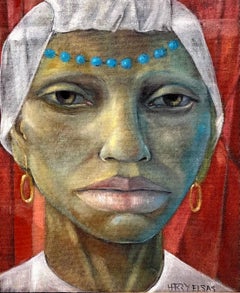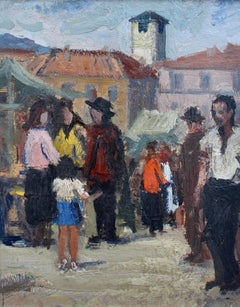
Runaway Child, Expressionist Oil Painting
View Similar Items
Want more images or videos?
Request additional images or videos from the seller
1 of 7
Barry Leighton-JonesRunaway Child, Expressionist Oil Painting
About the Item
- Creator:Barry Leighton-Jones (1932, British)
- Dimensions:Height: 32.5 in (82.55 cm)Width: 22.5 in (57.15 cm)
- Medium:
- Movement & Style:
- Period:
- Condition:Measurements include frame.
- Gallery Location:Surfside, FL
- Reference Number:1stDibs: LU38211707802
About the Seller
4.9
Platinum Seller
These expertly vetted sellers are 1stDibs' most experienced sellers and are rated highest by our customers.
Established in 1995
1stDibs seller since 2014
1,549 sales on 1stDibs
Typical response time: 1 hour
More From This SellerView All
- Mid Century Expressionist European Nighttime Steet SceneLocated in Surfside, FLMoody, Expressive European oil painting. signed illegibly lower right. it looks to be German or Austrian.Category
20th Century Expressionist Figurative Paintings
MaterialsOil, Board
- Large Israeli Expressionist Orientalist Oil Painting Draped Child Kibbutz ArtBy William WeintraubLocated in Surfside, FLWilliam (Sunny) Weintraub, Israeli (Born 1926) Oil on masonite William Weintraub (He was also known as Shlomo Weintraub and nicknamed Sonny Weintraub) Genre: Impressionist Subject: Portrait Medium: Oil Surface: Canvas Dimensions: framed 24 X 32.5 canvas 19 X 27 In an ever-changing art world that embraces one movement after the next, the timeless art of portraiture can become lost. Portraiture is often associated with the royal paintings of centuries-old French kings, European nobility, and other wealthy individuals from art history's past. However, styles like Social Realism and Dutch genre painting spotlighted...Category
Mid-20th Century Expressionist Figurative Paintings
MaterialsCanvas, Oil, Board
- Expressionist African American Woman Portrait German Brazilian Harry ElsasLocated in Surfside, FLFramed 20.5 x 18 image 14.5 x 12 Heinz Hugo Erich Elsas, (German-Brazilian 1925-1994) later known as Harry Elsas. Muralist, writer, designer best known as...Category
20th Century Expressionist Figurative Paintings
MaterialsOil, Board
- Figure, Oil and Gold Leaf Expressionist PaintingBy Hal LottermanLocated in Surfside, FLHal Lotterman was born in Chicago, Illinois in 1920 and studied at the University of Illinois and the University of Iowa. He received his BFA and MF...Category
Mid-20th Century Expressionist Figurative Paintings
MaterialsMixed Media, Oil, Board
- American Modernist Oil Painting Nude Male on Beach WPA Artist Group of 10By Ben-Zion WeinmanLocated in Surfside, FLBorn in 1897, Ben-Zion Weinman celebrated his European Jewish heritage in his visual works as a sculptor, painter, and printmaker. Influenced by Spinoza, Knut Hamsun, and Wladyslaw Reymont, as well as Hebrew literature, Ben-Zion wrote poetry and essays that, like his visual work, attempt to reveal the deep “connection between man and the divine, and between man and earth.” An emigrant from the Ukraine, he came to the US in 1920. He wrote fairy tales and poems in Hebrew under the name Benzion Weinman, but when he began painting he dropped his last name and hyphenated his first, saying an artist needed only one name. Ben-Zion was a founding member of “The Ten: An Independent Group” The Ten” a 1930’s avant-garde group, Painted on anything handy. Ben-Zion often used cabinet...Category
Mid-20th Century Expressionist Figurative Paintings
MaterialsOil, Board
- Gouache Painting Jules Pascin Hand Signed Woman in Boudoir German ExpressionismBy Jules PascinLocated in Surfside, FLGenre: German Expressionist Subject: Woman Medium: gouache paint Surface: Paper board This is hand signed lower right. Framed it measures 17.25 X 15.5, sheet 12 X 10 This came from a Jewish estate. there was no additional paperwork or provenance. Julius Mordecai Pincas (March 31, 1885 – June 5, 1930), known as Pascin Jules...Category
Early 20th Century Expressionist Figurative Paintings
MaterialsPaper, Cardboard, Gouache
You May Also Like
- Nandor Vagh Weinmann, Oil on cardboard, Naked Back, 1930sLocated in Saint Amans des cots, FROil on cardboard by Nandor VAGH WEINMANN (1897-1978), France, 1930s. Naked back. With frame: 64x56 cm - 25.2x22 inches ; without frame: 46x38cm - 18.1x15 inches. 8F format. Signed "Nandor V. Weinmann" lower left. In its Montparnasse frame. Very good condition. Born October 3, 1897 in Budapest, Nándor is the older brother of Elemer and Maurice Vagh-Weinmann. He came to Paris to present his work in 1931. He died on December 12, 1978 near Montereau (Seine-et-Marne) following an automobile accident. He is the most colorful of the three “expressionist” brothers. Painter of figures, landscapes, especially open mountains, and bouquets in bright colors. He is also a religious painter and then finds the tragic condition. Born in BUDAPEST on October 3, 1897, Nandor Vagh Weinmann belongs to a profoundly artistic people. Living in the heart of Central Europe where they came from Asia a millennium ago, the Hungarians have preserved a strong ethnic individuality whose mark is their very synthetic, non-Indo-European language. Resistant to secular invasions, they have kept the virtues of a very ancient humanity that have become rare in our modern world, especially since their way of life has remained essentially rural until today. In the arts they know how to express a generous, extreme sensibility and by the poetic verb, by the musical rhythms and also by a popular art of a richness, an exceptional harmony. Until the age of thirty-four, during the decisive years of childhood and youth, Nandor Vagh Weinmann was intimately imbued with popular life and the soul of Hungary. From the capital where his father was a jeweler and had a family of ten children, Nandor was the fifth, he knew first of all the suburbs, the populated districts, the rigors in winter of the cold and the snow. A very mobile existence made him acquainted with all of Hungary, from the Danube to Transylvania, its infinite plains and its wild mountains, its immense villages with ample low houses, and its towns which are still immense villages. The painter is passionate about rustic works, harvest scenes, beautiful folk costumes. Coming into direct contact with the peasants, he learned to know their soul. These contacts gave the artist a direct feeling for popular life and soul, as Millet once understood the peasants of Barbizon and Normandy whose existence he shared. What fascinated Nandor Vagh Weinmann above all were the festivals which enlivened the dreary life of the countryside, the circuses, the merry-go-rounds, the gypsies unleashing orgies of music, light and color. In the party, and especially the Hungarian party, the whole soul of a people, all its energy, its need for movement, for intensity, is expressed in its pure state and realizes the primary and essential form of what is called beauty. And as if melted at the party, there is the infinite steppe where herds of horses and oxen circulate where terrible storms sometimes roar where the seasons unfold their grandiose splendours. The young Nandor Vagh Weinmann nourishes his sensitivity to his inexhaustible shows, both eternal and always new, a sensitivity which very early declared itself that of a painter. Since the age of fourteen he painted, and since then he never stopped doing it. Two of his brothers Maurice, two years his junior, who had a remarkable career similar to that of Nandor and later Elemer who became Maurice's pupil, also devoted themselves to painting, despite family obstacles. And the three brothers united by a common passion worked together in Hungary and later in France. Painting was so much in the blood of the family, as in the past among the Veroneses, the Breughels, the Lenains, the Van Loos and so many other artistic dynasties, that three sons of the Vagh Weinmanns became painters in their turn. One of these, Emeric, son of Nandor, today occupies an important place in the contemporary school. Nandor, at fifteen, was a pupil of the Academy of Fine Arts in Budapest where he worked diligently, then at that of Vienna. He painted many portraits, but also landscapes, compositions and, by his relentless work, managed to live from his brush, although married very young and having to overcome many hardships. He therefore knew the hardships and miseries of life. These strongly impregnated his vision as an artist and explain the thrill of humanity that runs through all his work. A particularly moving experience was reserved for him at the age of twenty. In the hospitals of Budapest he had to paint extraordinary cases, operations, frightful wounds, the deformations to which our poor body is subjected by traumas and physiological decompositions. In these circumstances, it is not a question of gratuitous art, of formal research but of immediate, authentic expressions of our flesh and our being. We know that Breughel Velázquez and Goya had been haunted by the sight of cripples and of madmen Géricault by that of corpses. But life is ultimately stronger than anything, and it is life that Nandor Vagh Weinmann has passionately observed and translated through all the places where he has always painted on nature. Nothing stopped him. It happened to him to paint, for example in front of the mill of Linselles by a weather so cold, that nobody could stay outside, and that he did not leave the place before having finished his work. Because he works constantly on the ground, under the sky, in the silence he loves. His reputation is established. He exhibited at the national fair in Budapest, in the big cities of Hungary Szeged, Szombathely, Veszprém, Kaposvar. In 1931, like all artists in the world, he came to France. But unlike the others, he did not settle in Paris. Because Nandor Vagh Weinmann does not belong to this group of cosmopolitans that we call the School of Paris. He settled in Toulouse, where he remained for a long time with his brothers, and traveled throughout France, eager for new ties, exhibiting in the most diverse cities, in Bordeaux, Marseille, Lyon, Agen, Bayonne, Dax, Tarbes, Grenoble, Nice, Cannes, Strasbourg, Mulhouse, Colmar, Lille. He even crossed borders. He was in Saint Sebastian, in Geneva, and once in Egypt in 1927 where he painted King Fouad...Category
1930s Expressionist Figurative Paintings
MaterialsOil, Cardboard
- Hello LorettaBy Rob LynchLocated in Buffalo, NYAn original oil on MDF by contemporary conceptual painter Rob Lynch. This work was part of a recent pop up exhibition The Dreamer Who Dreams, which was curated to raise money for Th...Category
2010s Expressionist Figurative Paintings
MaterialsFiberboard, Oil
- Market Day in Piazza Grande Locarno SwitzerlandLocated in London, GB'Market Day in Piazza Grande, Locarno, Switzerland', oil on board, by unknown artist (1947-48). Locarno is an utterly charming Italian-speaking resort located on the northern shore o...Category
1940s Expressionist Figurative Paintings
MaterialsOil, Board
$693 Sale Price30% Off - Circle of Chaïm Soutine, Expressionist painting of Fishermen in a French harbourLocated in Harkstead, GBA very stylish image of a French harbour. Painted with great panache - wonderful brushwork and a vivid palette, reminiscent of the work of Chaim Soutine Circle of Chaïm Soutine (189...Category
20th Century Expressionist Landscape Paintings
MaterialsBoard, Oil
- Colorful autumn landscape. 1979, oil on cardboard, 46, 5x60 cmLocated in Riga, LVColorful autumn landscape. 1979, oil on cardboard, 46,5x60 cm Based on reality, artist painted expressionistic landscapes in which he dramatized the expression of shapes and colors....Category
1970s Expressionist Landscape Paintings
MaterialsCardboard, Oil
- Walk. Oil on cardboard, 70, 5 x 65, 5 cmLocated in Riga, LVWalk. Oil on cardboard, 70, 5 x 65, 5 cm Aleksandr Rodin (1922-2001) Painter Born in a family of farmers. Wife Rasma Lace - art scholar. Studied at the Stalingrad School of Art, Sar...Category
1970s Expressionist Figurative Paintings
MaterialsOil, Cardboard
Recently Viewed
View AllMore Ways To Browse
Vintage Childs
Oil Paintings From England
President Paintings
Early Expressionist Painting
American Expressionist Oil Painting
Presidental Oil
50s Painting
50s Paintings
President Oil
Retro Art Supply
Presidents Oil Paintings
Oil Paintings Happy
Oil Paintings Men
Men Oil Painting
Oil Paintings Mens
Expressionist People
Painting Man Book
Oil Royal England

